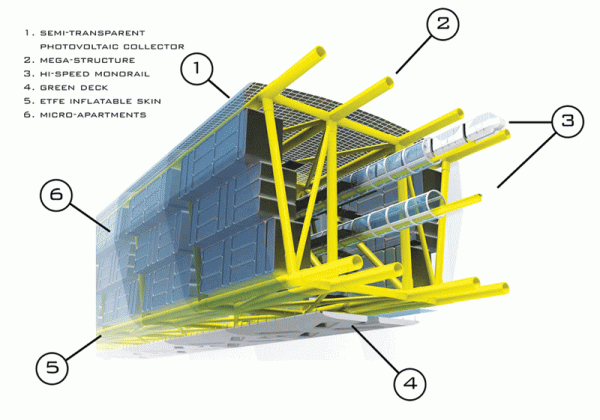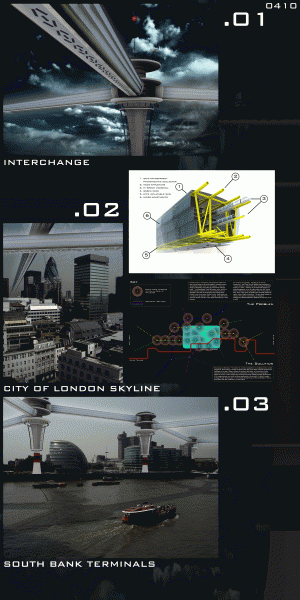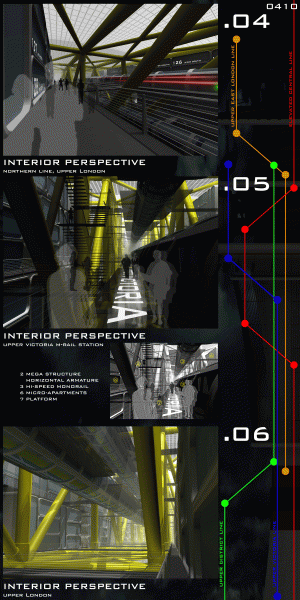Special Mention
2007 Skyscraper Competition
Drew Mills, Sebastian Messer, Paul Warrior
United States
Central London is amongst the most expensive locations for land and real estate in the world despite having a 19th Century transportation system at full capacity that puts the city in danger of stagnating and losing its pre-eminent world city status. The long-delayed Cross Rail Project, which will form a rail link between Heathrow, Brentwood, and Shenfield, via the West End and Canary Wharf, will likely begin construction in 2008. It will not be completed until 2015, three years after the London Olympics.
It is hoped by its supporters, including the current UK Government, that Cross Rail will facilitate the development of Thames Gateway to address the chronic shortage of affordable housing in London. However, the environmental impact of a building program, on the 40 miles stretch from the Thames Barrier at Woolwich to the marshlands of the Thames Estuary in Kent, remains highly contentious. It also repeats a solution of the past by creating an underground network designed to distribute the population to the suburbs.
The solution to London’s congestion is not underground, but London Overground. More easily and rapidly constructed than the tunnel which Cross Rail proposes from Paddington to the Isle of Dogs, a network of elevated, high speed rail connections, London Overground would be the armature for the construction of a mega-structure overlaying the historic city center.
London Overground would be financed by realizing air-rights developments off the structure and would contribute significantly to the solution of London’s housing shortage through “planning gain” on commercial developments and the densification of the city center rather than the construction of a new suburb.
















